15 years one-stop China custom CNC machining parts factory
Home / Product / Industrial Industry /
VMT is a manufacturing facility for various industrial CNC machining parts. With 13 years of experience in CNC processing industrial parts and various types of CNC industrial parts samples, you can send pictures to view and view the factory online, contact us immediately to obtain samples. We can provide you with various types of industrial CNC machining product services to meet your customized CNC machining needs.
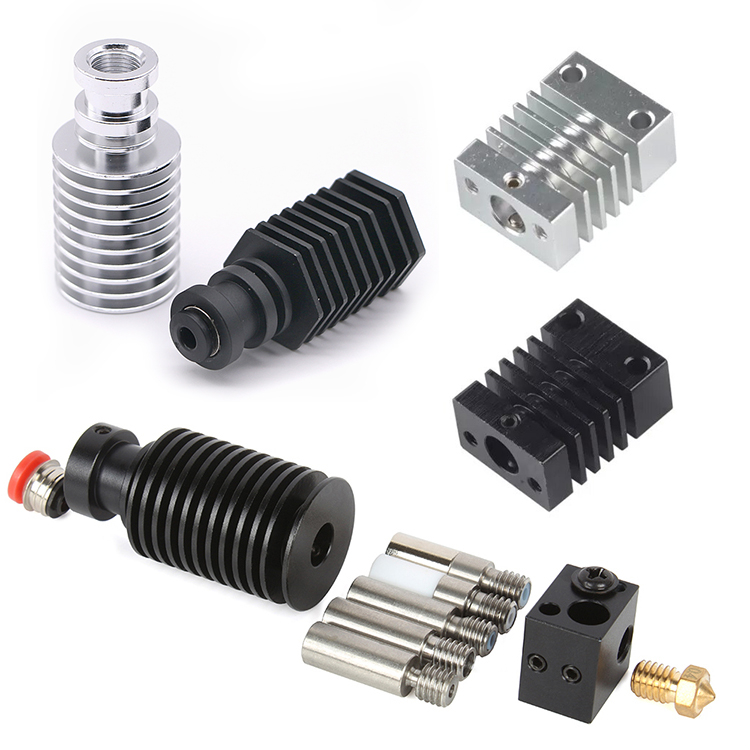
Product Specification:
Custom Aluminium Extruder Radiator For 3D Printer Heatsink CNC Milling Services
13 years |
1 day |
0 pc |
90% |
|
Experience |
Lead time |
MOQ |
Countries customers |
Custom CNC 3d Printer Heatsink Services Manufacturer
| VMT is a custom CNC 3D printer radiator manufacturer, we have a one-stop CNC machining service including CNC prototype machining, various materials and multiple surface treatment options to meet customers' various machining needs. We have a professional CNC machining team to design, optimize and manufacture high-quality 3D printed radiators for you. |
Custom CNC 3d Printer Heatsink Prototyping Machining
Our custom CNC 3D printer heat sink service starts with CNC prototyping. The 3d printed heat sink can be precisely machined using CNC machining to meet customers. CNC machining ensures accuracy, efficiency and consistency in the production of complex radiator designs. We can create custom heatsinks that exactly meet a customer's specific needs, optimizing cooling and overall printer performance. |
|
|
|
|
||
Custom CNC 3d Printer Heatsink Surface Treatment |
Custom CNC 3d Printer Heatsink Material |
||
|
In addition to CNC prototyping and material selection, we offer a variety of finish options for custom CNC 3D printer heat sinks. Surface treatments not only enhance the aesthetics and functionality of your heat sink, but also help improve performance, durability, and longevity. Provide cost-effective surface treatment according to customer preferences and requirements. |
As a trusted manufacturer of custom CNC 3D printer heat sinks, a wide range of material options are available. Each material has unique properties that affect thermal conductivity, durability and cost to meet various requirements and help customers achieve the performance they need from their 3D printers. Our expert team can guide customers to choose the most suitable material according to their specific needs and application scenarios, ensuring the best heat dissipation and overall performance of the printer. |
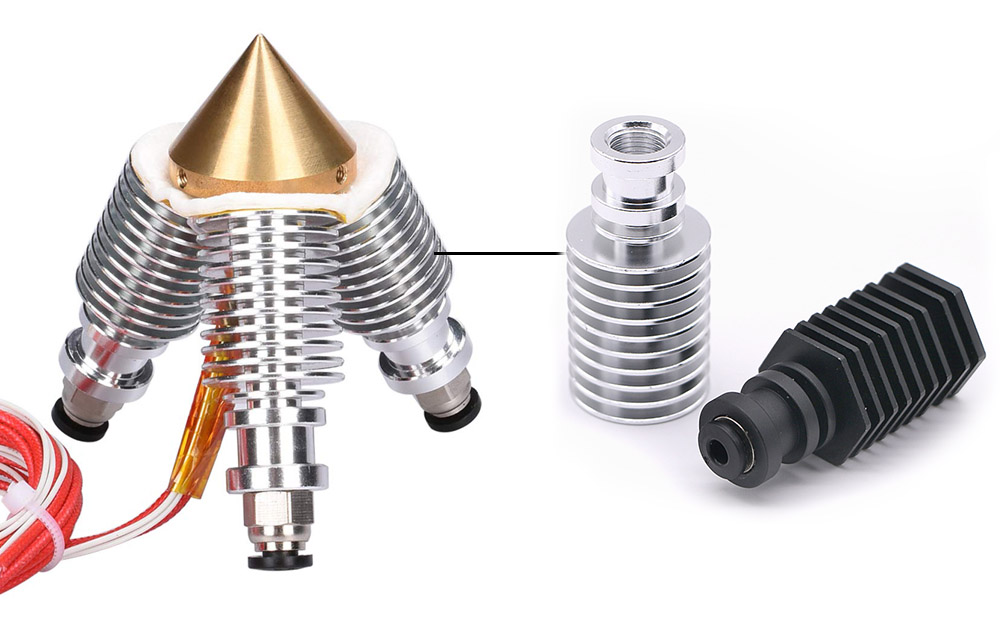
Custom CNC 3d Printer Heatsink Parts Sample
|
|
|
||
|
|
|||
|
|
|
||
|
|
|||
|
|
|
| Custom CNC 3D printer heatsinks, the choice of materials plays a crucial role in their performance, durability, and heat dissipation capabilities. As a leading manufacturer in the field, we offer a range of materials to meet the specific requirements of our clients. The following are common materials for custom CNC 3D printer heat sinks: |
|
|
Aluminum CNC 3D Printer Heatsinks
Aluminum: Aluminum: Aluminum is a popular choice for 3D printer heatsinks due to its excellent thermal conductivity, light weight and cost-effectiveness. They are widely used in 3D printer applications due to their good heat dissipation capabilities.
More Details>> |
|
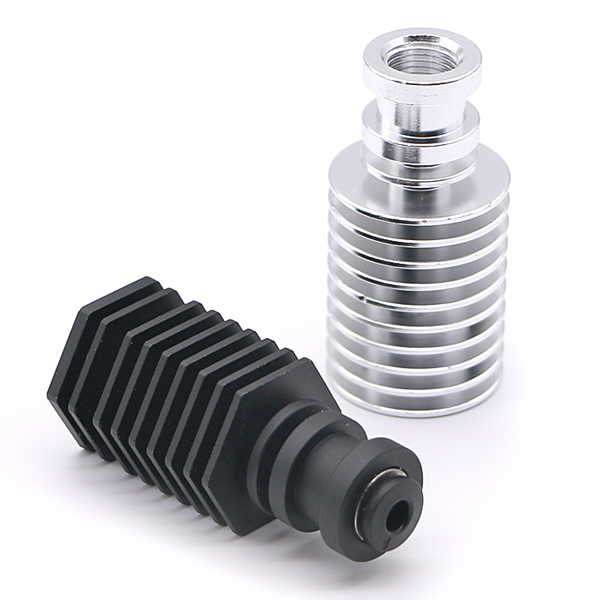
|
|
Copper CNC 3D Printer Heatsinks
Copper: Copper: Copper is known for its excellent thermal conductivity, making it an ideal material for 3d printed heat sinks that require excellent heat dissipation. Although copper alloys are relatively expensive, they have excellent performance in demanding 3D printing scenarios, contributing to consistent and reliable printing performance.
More Details>> |
|
|
|
Stainless Steel CNC 3D Printer Heatsinks
Stainless Steel: Stainless Steel: Stainless steel 3D printer offer durability, corrosion resistance, and moderate thermal conductivity. They are ideal when a balance between performance and cost is required. Stainless steel 3D printer heat sinks provide long life and reliability in harsh 3D printing environments.
More Details>> |
|
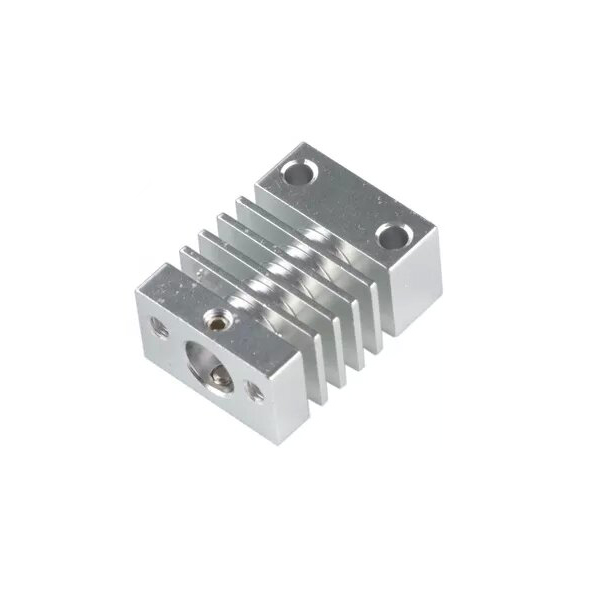
|
|
Brass CNC 3D Printer Heatsinks
Brass: Brass has good thermal conductivity and corrosion resistance. When aesthetics are considered, brass is often the material of choice for 3D printed heat sinks, as brass can be polished to a visually appealing finish.
More Details>> |
|
|
|
Titanium CNC 3D Printer Heatsinks
Titanium: Titanium is known for its light weight, high strength and excellent corrosion resistance. They are particularly suitable for applications where weight reduction is critical, such as 3D printed heat sinks in portable or handheld 3D printers.
More Details>> |
|
|
We have expertise and a wide range of materials in the manufacture of custom CNC 3D printer heat sinks. Material selection depends on factors such as the specific requirements of the 3D printer, desired cooling capabilities, cost considerations, and overall performance goals. Our team of experts can guide you in selecting the most suitable material for your custom CNC 3D printer heat sink, ensuring optimum functionality, quality and longevity.
To explore the possibility of customizing your CNC 3D printer heat sink with different materials, contact us today and let us help you realize your 3D printed heat sink project. |
|
Surface treatment also plays a vital role in enhancing the performance, durability and aesthetics of custom CNC 3D printer heat sinks. In our company, we offer a wide range of surface treatment options to meet the specific needs and preferences of our customers. Common surface treatments for custom CNC 3D printer heat sinks: |
|
1. Anodizing
Anodizing: Anodizing is an electrochemical process that forms a protective oxide layer on the surface of the heatsink. It enhances corrosion resistance, improves durability, and provides an aesthetically pleasing finish. Anodized 3D printer heatsinks are available in a variety of colors, allowing for customization and branding options. |
|
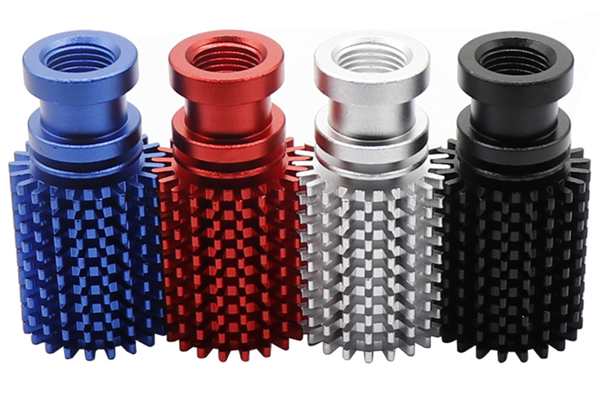
|
2. Powder Coating
Powder Coating: Powder coating involves applying a dry powder to the 3D printer heatsink's surface, which is then cured under heat to create a durable and attractive coating. Powder coating provides excellent protection against corrosion, abrasion, and impact. It offers a wide range of color options and can be customized to match specific design requirements. |
|
|
|
3. Chemical Passivation
Chemical Passivation: Chemical passivation is a surface treatment technique used primarily for stainless steel 3D printer heatsinks. It removes surface impurities and forms a protective oxide layer, enhancing corrosion resistance and maintaining the heatsink's aesthetic appearance. |
|
|
|
4. Brushed
Brushed: A brushed finish gives the 3D printer heatsink a textured and visually appealing look. It involves creating fine parallel lines on the heatsink's surface, providing a sleek and modern appearance. |
|
|
|
5. Polishing
Polishing: Polishing is a surface treatment that gives the 3D printer heatsink a smooth and reflective finish. It enhances the heatsink's appearance and can be combined with other surface treatments for added protection and aesthetics. |
|
|
|
We have professional knowledge in surface treatment technology and experienced surface treatment experts for quality control. The choice of finish depends on factors such as desired aesthetics, environmental considerations, and specific functional requirements. Our experienced team can guide you in choosing the most suitable finish option for your custom CNC 3D printer heat sink, ensuring visual appeal and performance. |
| When it comes to the manufacturing process for custom CNC 3D printer heatsinks, precision and attention to detail are paramount. As a leading manufacturer in the field, we follow a well-defined process to ensure the production of high-quality custom 3d Printer heatsinks that meet the specific requirements of our clients. Let's explore the key steps involved in our manufacturing process: |
| Due to the signed confidentiality agreement, the following picture is not the production process of this part, it is for reference only: |
|
1. Design and Prototyping
Design and Prototyping: The process begins with the design and engineering phase. Our team of experts collaborates with clients to understand their specific needs and requirements. We utilize advanced CAD software to create precise 3D models of the custom 3d Printer heatsinks, considering factors such as dimensions, heat dissipation requirements, and compatibility with the 3D printer system. |

|
2. Material Selection
Material Selection: Once the design is finalized, we move on to material selection. We offer a range of materials, such as aluminum, copper, stainless steel, brass, titanium, and graphite, each with its unique properties. The material choice is based on factors like thermal conductivity, durability, weight, and cost-effectiveness. |
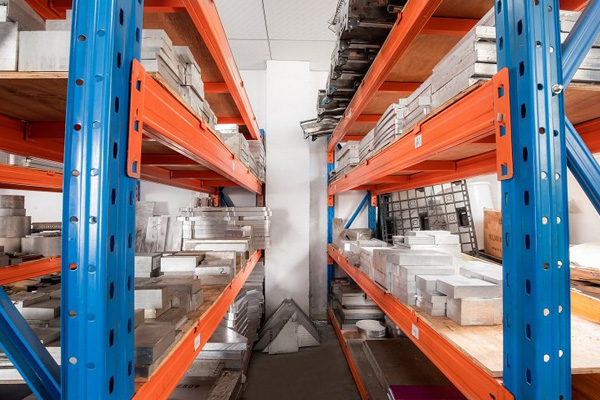
|
3. CNC Machining
CNC Machining: With the design and material determined, we proceed to CNC machining. CNC machining technology allows for precise and automated machining processes. Using CNC machines, we transform the chosen material into the desired 3d Printer heatsink shape, ensuring accuracy and consistency in the production process. This step involves cutting, drilling, and shaping the material according to the design specifications. |
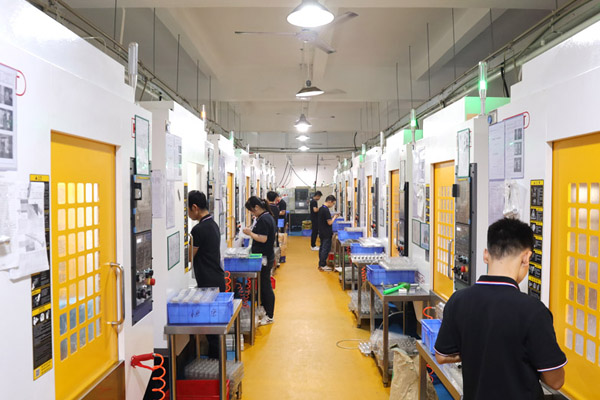
|
4. Surface Treatment
Surface Treatment: After the 3d Printer heatsinks are machined, we move on to surface treatment. We offer various options such as anodizing, powder coating, chemical passivation, brushed finish, and polishing. These treatments improve the heatsink's performance, protect against corrosion, enhance aesthetics, and allow for customization options. |

|
5. Quality Control
Quality Control: Quality control is an essential aspect of our manufacturing process. Our team conducts rigorous inspections and tests at various stages to ensure that the 3d Printer heatsinks meet the highest standards. We check for dimensional accuracy, surface finish, heat dissipation capabilities, and overall functionality. |
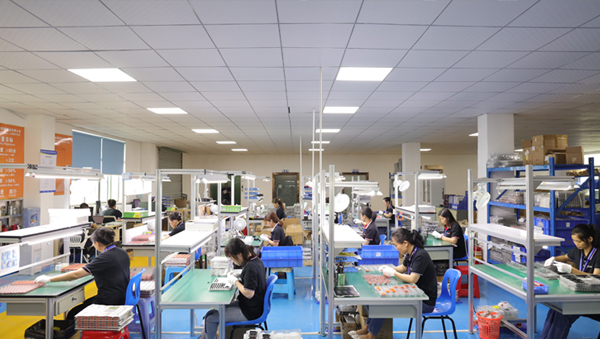
| Quality Testing Equipment |
|
|
|
|
||
|
|
|
|
||
|
|
|
|
||
|
6. Packaging and Delivery
Packaging and Delivery: Once the 3d Printer heatsinks pass the quality control checks, we carefully package them to ensure safe transportation. We use appropriate packaging materials to protect the heatsinks from any damage during transit. Finally, we deliver the custom CNC 3D printer heatsinks to our clients, ensuring timely and secure delivery. |

|
Throughout the manufacturing process, we maintain effective communication with our clients, providing updates and addressing any concerns or modifications. Our aim is to deliver custom CNC 3D printer heatsinks that not only meet but exceed our clients' expectations. |
|
Quality inspection reports are an important tool to ensure the quality and precision of your CNC turning work. We can provide a comprehensive overview of the finished product with a detailed test report on material and product performance, either from an in-house auditor or a third-party laboratory. Ensure finished product meets all customer requirements. |
|
Qualify Evaluation Report
For each order we receive, we can provide a list of quality inspection reports according to your processing requirements.
Inspection report
Certificate
ISO 9001:2015 IATF 16949:2015 ROHS Directive 12 patent certifications
|
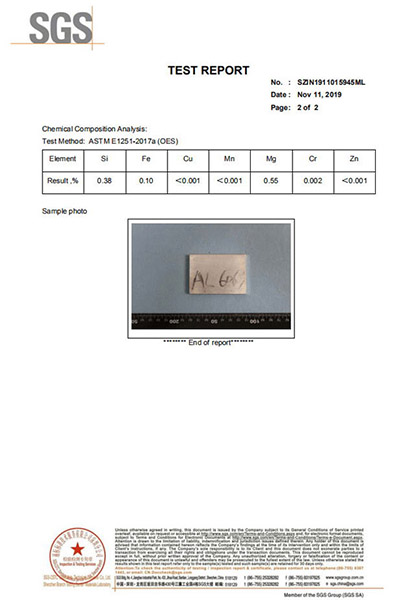 |
|
|
Custom CNC 3d Printer Heatsink FAQs
|
Q: Why should I choose custom CNC 3D printer heatsinks?
Q: Can custom CNC 3D printer heatsinks be used with any type of 3D printer?
Q: Can I choose the material and finish of my custom CNC 3D printer heatsinks?
Q: How do I order custom CNC 3D printer heatsinks?
Q: What is the typical turnaround time for custom CNC 3D printer heatsinks?
Q: Do you offer warranty or guarantees for custom CNC 3D printer heatsinks?
Q: Can you provide references or examples of your previous custom CNC 3D printer heatsink projects?
|
Custom CNC Lathe Turning M3 M4 M5 astener Knurled Thumb Lead Free Brass Threaded Insert Nut
 Related suggestion
Related suggestionGive us a call or send an inquiry to our emailbox, we will answer your doubts according to your customers' requirements, and quote you immediately.
